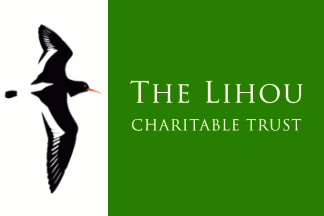Lihou Island is a small tidal island that forms the most westerly point of the Channel Islands. At low tide it is connected to the L’Eree headland in St Peter’s parish via a stone causeway. While recorded history for the island began in 933 AD there is evidence of Mesolithic era habitation from archaeological digs that took place in the 1990s.
Along with the Neolithic tombs found close by on the L’Eree Headland, locals traditionally believed that the island was a meeting place for witches and fairies. This was somewhat unfortunate for the Benedictine monks who, under the authority of Mont St Michel, founded the Priory of St Mary on the island sometime in the 12th Century. Locals suggested that the monks may themselves be in league with dark forces. Although it is more likely that the Priory was founded as a challenge to the local beliefs! The priory, now in ruins, is thought to be the largest religious relic in the Bailiwick.
The Priory was seized in the 15th Century by Henry V as an alien priory and, despite several Priors being installed, the Priory was largely abandoned and in 1759 the building was destroyed. John West, The Governor of Guernsey, had the building demolished in order to prevent French forces of what became the Seven Years’ War from occupying the island.
In the 19th century a farmhouse was built by the then lieutenant bailiff of Guernsey, Eleazor le Marchant. It appears that in the early 19th century the Island had become significant in the seaweed industry;
According to Wikipedia
Records suggest considerable activity as early as the beginning of the nineteenth century. The value of the seaweed as a fertiliser was so great that in 1815 Eleazor Le Marchant…initiated a court case to prevent islanders from drying seaweed on the beaches of Lihou. The case eventually led to new regulations issued in 1818 by the Bailiwick legislature, known as the Chief Pleas at the time, based on a review of ancient royal decrees. However, the Royal Court of Guernsey ruled in favour of the islanders in 1821, with the effect that permission to harvest seaweed on Lihou was granted to inhabitants of the parishes of St Peters and St Saviours. More than a century later, in 1927, a factory was established on the island to produce iodine from the seaweed.
The Island has variously changed hands since Eleazor le Marchant but, other than the German occupying forces using the farmhouse for target practice, the island was largely left until in 1995 when The State of Guernsey bought it. Since 2006, the island has been jointly managed by the Environment Department of the States of Guernsey and the Lihou Charitable Trust. It is now used as an educational resource and the redeveloped farmhouse is used as accommodation for school trips.
Lihou Island was identified as a "Site of Nature Conservation Importance" in 1989, and as part of an "Important Bird Area" which includes parts of the shoreline of Guernsey and, together with L’Eree Headland was later designated Guernsey’s first Ramsar Wetland site in 2006. This has lead it becoming an extensive marine and nature reserve and a number of rare and endangered species are observed in the area as a result. Consequently, as well as being a site for ordinary tourism, as well as education, Lihou’s main source of income has now become ecological tourism!
Times of tides and the days which the island can be visited are available on the States of Guernsey Website and via The Guernsey Information Centre. Opening times for the causeway are also posted at either end of the causeway, published in the Guernsey Press and broadcast by BBC Radio Guernsey. It is recommended that visitors leave at least 20 minutes to traverse the ¼ mile causeway.

